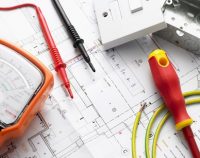Do you know where electricity comes from? To be able to say yes to that question, you must understand a bit about the physics of matter. In this course you’ll learn the basics involving: matter, electron theory, magnetism, electromagnetism, the laws of electrical circuits, series circuits, parallel circuits, series-parallel circuits and the basic electrical formulas.
Instructor: Juan-Pesante, PEDo you know where electricity comes from? To be able to say yes to that question, you must understand a bit about the physics of matter. In this course you’ll learn the basics involving: matter, electron theory, magnetism, electromagnetism, the laws of electrical circuits, series circuits, parallel circuits, series-parallel circuits and the basic electrical formulas.
This course also introduces the basic electricity and electrical circuit concepts associated with direct current. Topics include calculation of current, voltage, resistance and power in series, parallel and combination circuits with direct current (DC) power sources.
SPECIFIC KNOWLEDGE OR SKILL OBTAINED
This course teaches the following specific knowledge and skills:
- How is DC voltage produced and what does an electric circuit consist of
- What is a rectifier and how half-wave bridge rectifiers differ from full-wave bridge rectifiers
- What is the difference between a schematic diagram, one-line diagram, block diagram and wiring diagram
- What is resistivity and how temperature affects the resistance of materials
- What is the difference between open circuit, close circuit, and short circuit
- What primary characteristics identify a series, parallel or a combination circuit
- How to calculate the current and voltage drop in series, parallel or combination circuits
- How to calculate the equivalent resistance for a series, parallel or combination circuit
- What is meant by the terms voltage divider and current division
- How is electron flow theory different from conventional current theory
CERTIFICATE OF COMPLETION
You will be able to immediately print a certificate of completion after passing a 30 question multiple-choice quiz. The quiz can be retaken unlimited times until a passing grade of 70% or better is earned. This course satisfies 9 professional development hours (PDH) of continuing education.



